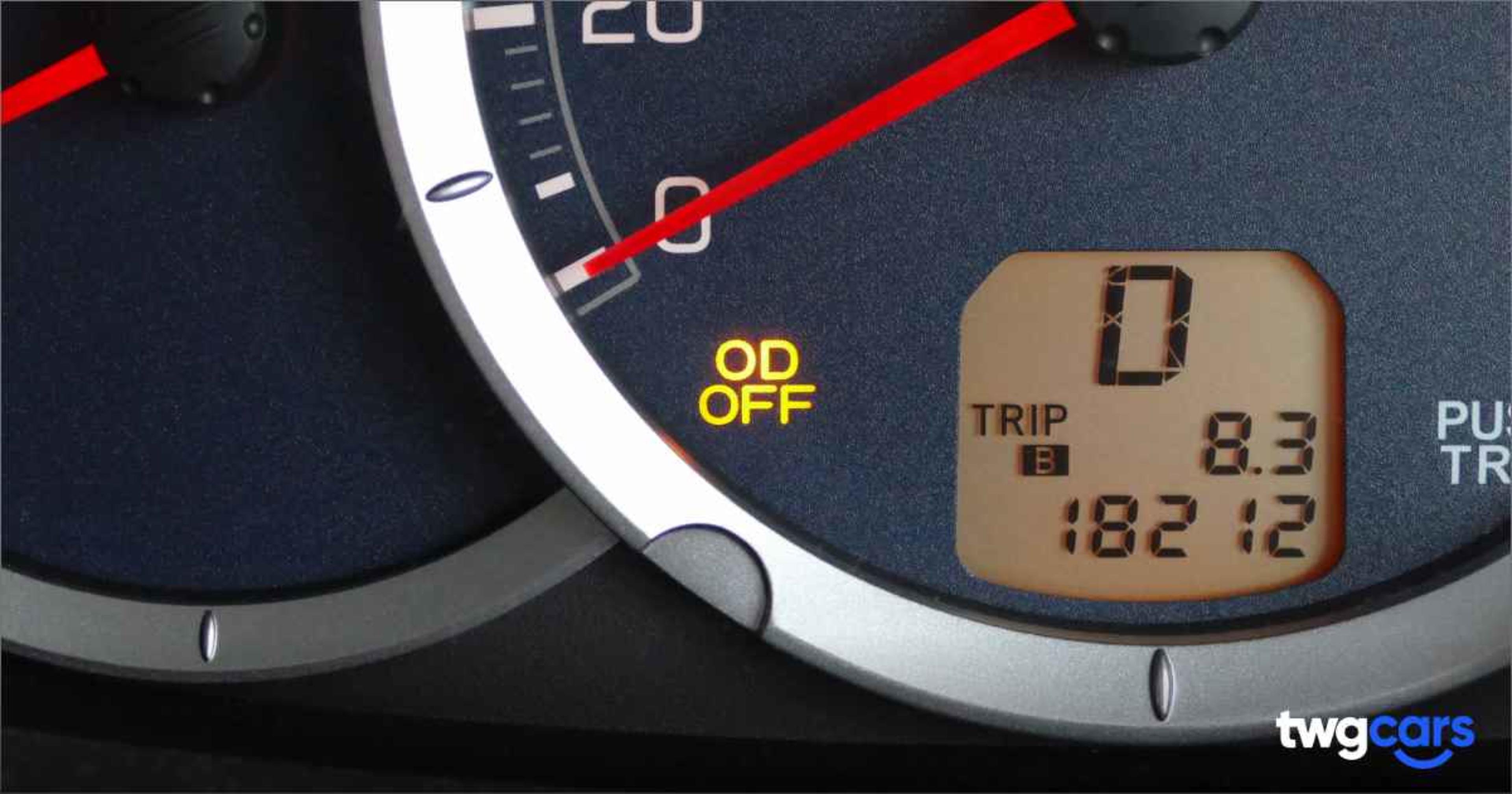Deciphering Used Car Mileage: How Many Kms Is Too Many for a Used Car?

Deciphering Used Car Mileage: How Many Kms Is Too Many for a Used Car?
If you’re asking, ‘how many kms is too many for a used car’, let’s cut to the chase. Generally, vehicles over 200,000 kms could be ripe for costly repairs, but the true picture is nuanced by factors we’ll unpack. Dive into this article for a clearer lens on mileage, maintenance records, and model dependability, so you can pinpoint that sweet spot when buying used.
Drive Away Summary
- Mileage on used cars is crucial but varies depending on factors such as a car’s age, average yearly mileage, brand reliability, and the care it’s received.
- High-mileage cars can be good value if they’re well-maintained, but potential buyers should investigate a car’s service history and be prepared for possible higher repair costs.
- To preserve the life of a high-mileage used car, regular maintenance is essential, including using high-mileage oil, routine checks, and addressing minor issues before they escalate.
- A good service history trumps mileage when it comes to a car’s condition, so you should prioritise cars with a good logbook history
Understanding the Importance of Mileage in Used Cars
Mileage is like the pulse of a used car, providing a quick snapshot of its value and potential longevity. A car’s odometer doesn’t just count kilometres; it narrates a story of the car’s life. The lower the mileage, the fewer chapters it has behind it, indicating less wear and tear.
But there’s a twist. The significance of mileage isn’t one-size-fits-all. It’s shaped by many factors, including your budget and the specific type of vehicle. For instance, luxury cars become more expensive to maintain the higher in mileage they get, so you should factor that into your budget. Also, a larger budget might allow for a used car with lower kilometres.
Another consideration is how the car got its current odometer reading – less stress is put on cars travelling 100km/h down country highways then cars that have spent their lives stopping and starting on city streets. This means a country car with 120,000 km could very well be in a better condition than a city car with 90,000 km.
Determining the Ideal Mileage Range for a Used Car
So, what’s a reasonable mileage for a used car? It’s not just about finding the lowest number on the odometer. It’s about balancing a car’s age, its average yearly mileage, and the car’s make and model reliability.
Age and Average Mileage
To put mileage into perspective, consider the car’s age.
Let's take an odometer reading of 100,000 km as an example: if the car is less than 4 years old then that car has driven a lot since going to its first home, but if it's over 10 years old then you know that car spent most of its life resting in someone's driveway.
When buying a used car, how many kilometres it has racked up over the course of its life gives you an insight into how its owners used it. If a car's mileage indicates that it was driven on average more than 15,000 kilometres a year, then you know it was a heavily used vehicle. How do you know this? Well, because the average Australian motorist drives between 12,000-13,000km a year.
But a car's mileage is not the only indicator of whether a car is in good condition, other factors to consider are:
- Maintenance history - was the car regularly serviced?
- General wear - should the car be in a better condition given its age?
- Test drive - is it driving smoothly?

Make and Model Reliability
Not all cars age the same way. Some brands and models have a reputation for outlasting others, making them a great option for those considering new cars. A Toyota Corolla, for example, is known for its durability and can often exceed 100,000 km while still maintaining performance without extensive maintenance costs. Some diesel motors can also rack up some very high mileage - it’s not uncommon for Toyota Landcruisers to stay in good condition over 300,000 km if well maintained. In general, diesel engines last longer than petrol engines. When looking for a new car, considering such models can be a wise choice.
The make and model of a car can significantly influence its expected lifespan. This means a high-mileage car from a reliable brand might still have plenty of life left, despite the high number on the odometer. So, when considering how much life a car has left, it’s essential to factor in the brand’s reputation for longevity.
Identifying Potential Issues in High-Mileage Used Cars
While high-mileage cars can offer great value, they may also come with some baggage. It’s crucial to look under the hood and beyond to identify potential problem areas before buying, as this can impact the resale value of the vehicle.
Engine Wear and Tear
The car’s engine is the heart of a car, and high mileage can take a toll on it. But with proper care, such as regular services, oil changes, and fuel system cleaning, you can keep the engine in good shape.
Cold engine starts are particularly hard on the engine. The oil doesn’t circulate well until the engine warms up, contributing to the majority of engine wear. Gradually warming up the engine before pushing its performance limits can reduce wear and extend its lifespan. That being said, don’t allow your engine to idle for too long before you take off, as that can also damage your car (as well as the environment!).
Suspension and Steering Components
The suspension and steering components also demand attention in high-mileage vehicles. Issues here can affect ride comfort and handling and may include:
- Worn or damaged shock absorbers
- Suspension bushings
- Ball joints
- Control arms
To reduce stress on a vehicle’s suspension and extend its lifecycle, stick to a regimented tyre care routine. This includes scheduled tyre rotation, maintaining correct inflation, and replacing tyres when needed6.
Evaluating Service History and Maintenance Records
The service history and maintenance records of a used car, often documented in a car log, can be likened to its report card. A comprehensive service history can signal that the previous owner has kept the car well-maintained, potentially translating to a more reliable purchase.
Verified service records can confirm the vehicle’s mileage, provide evidence of the ownership history, and support the car’s reported condition through a clear timeline of servicing. Plus, a complete service history is crucial for upholding the car’s warranties or extended coverages, offering financial benefits for potential buyers.
Generally speaking, you should prioritise a good logbook history over a low odometer reading when looking for a new car – if the history shows the car was primarily serviced by the manufacturer, that’s even better.
Pros and Cons of High-Mileage vs. Low-Mileage Used Cars
Now, let’s weigh the pros and cons of high-mileage versus low-mileage used cars.
On one hand, low mileage used cars can be more economical than new ones because they avoid the steep initial depreciation, providing buyers with cost savings. They can also contribute to environmental sustainability by lessening the demand for manufacturing new vehicles. Plus, they typically run more efficiently and are less likely to have hidden defects due to less wear and usage.
On the other hand, high-mileage cars rarely exceed 350,000 kilometres unless meticulously maintained, and such longevity depends heavily on the vehicle’s make and history. The cost of repairs tends to increase for high-mileage cars7, especially as they approach or exceed 250,000 kilometres.
So, which is better? It depends. If you’re looking for efficiency and fewer potential issues, a low mileage is your best bet. But if you’re on a tight budget and willing to risk potential repairs, a high mileage car could save you money on the initial purchase.
Tips for Buying a High-Mileage Used Car
We would always recommend that you avoid buying a used car with too many kilometres racked up - most cars with an odometer reading exceeding 150,000 kilometres have more wear than is worth trying to fix. While their initial price is low, many car buyers will find that they'll get more value for money purchasing a good car with less kilometres.
So, buying a high mileage used car involves some risk, but with the right approach, there is such thing as a higher mileage car that you won't regret buying in the long run.
First, set a realistic budget. For example, if you’re looking at a budget under $15,000, a car with around 200,000 kilometres is much more within your price range than low mileage cars.
Next, don’t skip the inspection. Conduct a thorough check to assess the car’s condition and anticipate potential repairs. And finally, never underestimate the value of expert opinions, like the one you're reading here courtesy of TWG Cars. Consulting with mechanics or automotive professionals can provide crucial insights into the expected lifespan and maintenance needs of the car.

Maintaining Your High-Mileage Used Car
Once you’ve driven your high-mileage beauty off the lot, the journey doesn’t end there. Proper maintenance is crucial to keep it running smoothly and to maximise its lifespan.
Regular Maintenance and Servicing
Regular maintenance is the key to preserving high-mileage vehicle functionality. This includes things like regular oil changes, fluid checks, and battery care.
For high mileage cars, it’s recommended to:
- Switch to high-mileage motor oil after the car has reached 120,000 kilometres to better maintain the engine
- Use engine treatments regularly
- Regularly replace filters, belts, hoses, and clamps
These steps are essential for internal maintenance.
Addressing Potential Issues Early
A stitch in time saves nine, as they say. Generally speaking, addressing potential issues early, based on warning signs, can prevent escalating problems and save on future repair costs.
Ignoring small issues can lead to major problems down the line, which can be time-consuming and costly to fix. Here are some small issues that should be addressed immediately to avoid compromising the vehicle’s integrity:
- Irregularities in tyre wear
- Unusual engine noises
- Leaks of any fluids
- Evidence of rust or corrosion on vehicle components
By addressing these issues promptly, you can prevent more serious problems from occurring.
Summary
As we’ve seen, mileage is an important factor when buying a used car, but it’s not the only one. Balancing factors like the car’s age, average yearly mileage, and the car’s make and model reliability is equally crucial.
High mileage used cars can offer great value, and with proper maintenance, they can still have a long life ahead.
Low mileage cars are generally in better shape and a higher resale value, which is why we recommend purchasing a car with less than 100,000 kilometres on the odometer if you can find one in your budget.
But remember, every car purchase should be approached with careful consideration and a bit of expert advice. After all, a car isn’t just a vehicle - it’s an investment, a companion, and part of our daily lives.

Frequently Asked Questions
What is a good mileage for a used car?
A good mileage for a used car can vary depending on factors like the car's age, make, and maintenance history. Generally, cars with around 200,000 kilometres can still offer good value.
How important is the service history of a used car?
The service history of a used car is very important as it can indicate whether the car has been well-maintained, which is crucial for a reliable purchase.
What are the common issues in high mileage used cars?
High mileage used cars commonly have issues like engine wear and tear, as well as potential problems with suspension and steering components, so regular inspections are key to identifying these early.
How can I maintain a high mileage used car?
To maintain a high mileage used car, it's important to prioritise regular maintenance such as oil changes, fluid checks, and battery care. Consider switching to high-mileage motor oil after reaching 120,000 kilometres.
What are the pros and cons of high mileage vs low mileage used cars?
In conclusion, low-mileage used cars are more efficient and less likely to have hidden defects, while high-mileage cars offer cost savings but may require more maintenance. Consider your priorities and budget when making a decision.
Sources
- https://www.abs.gov.au/statistics/industry/tourism-and-transport/survey-motor-vehicle-use-australia/latest-release
- https://www.canstar.com.au/car-insurance/short-distance-servicing/
- https://www.whatcar.com/toyota/corolla/hatchback/review/n18901
- https://medium.com/@akashpal.myraasta/top-5-tips-to-maintain-your-car-engine-health-a59125adb620
- https://www.consumerreports.org/cars/cars-driving/should-you-warm-up-your-car-before-driving-a5580016349/
- https://www.carsguide.com.au/car-advice/how-do-i-know-when-my-car-needs-new-tyres-32135
- https://www.popularmechanics.com/cars/a23877/car-maintenance-costs-mileage/


